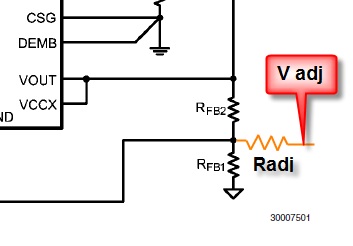jimit.shah
Newbie level 3
Hi,
For our project, I need to control a varying input DC signal (5V-60V) and convert it to a stable 5V output. So I am using:
LM5116MH buck converter. I have the circuit diagram which came along with it's datasheet (page 23). The problem is that I need to interface this with a dsPIC33 microcontroller for MPPT. What is the best way to go about this?
Any help would be much appreciated! Thank you!
For our project, I need to control a varying input DC signal (5V-60V) and convert it to a stable 5V output. So I am using:
LM5116MH buck converter. I have the circuit diagram which came along with it's datasheet (page 23). The problem is that I need to interface this with a dsPIC33 microcontroller for MPPT. What is the best way to go about this?
Any help would be much appreciated! Thank you!
